Because of climate change and pollution, marine life over the years has started to deteriorate.
In the 1970s, and just like many places in the world, Florida found this was a problem and sought to find a solution.
Around that time, Florida was also facing an issue with tires.
Before the era of recycling, people didn’t know how to get rid of objects. And as a result, discarded objects often piled up in their landfills.
So with problem preserving the marine life and also an issue with piling up tires, what could they possibly do?
They came up with a plan. Artificial Reefs.
An artificial reef, as you may have known, is a man-made structure that was sunk in the ocean as a means to provide habitat to fishes in hopes that it would encourage their living conditions and reproduce.
A non-profit group composed of fishermen called Broward Artificial Reef (BARINC), aimed to create artificial reefs using the tires that were piling up in the landfills.
This method is meant to support marine life and get rid of the tires in the process.
They would call this the Osborne Reef.
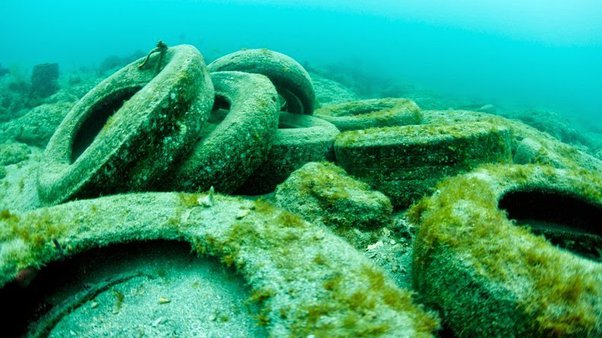
And so sinking tires they did.
In 1972, Fort Lauderdale, Florida. Million of tires were sunk off the coast.
With the support of the U.S. Army Corps of Engineers, the plan was carried out, and 2 million tires were placed over 36 acres ocean floor, 7,000 feet offshore in 65 feet of water.
The tires were bundled using steel clips and nylon.
They concluded that if they were to sink these tires, the coral reefs would attach to the tires and continue to grow to provide a home to fishes underwater.
Initially, the corals successfully latched into the tires. However, this did not go well when no one thought of the non-corrosivity of the steel restraints.
Consequently, the saline water corroded the materials leading the tires to separate from each other.
Due to the newfound mobility, the tires started to destroy the corals both nearby and the ones that were already successfully attached to it.
It not only destroyed the existing corals but also prevented new ones from forming ultimately leading to its failure.
If that’s not bad enough, the east coast of Florida is prone to tropical winds and storms making the tires subject to those forces and littering nearby beaches, some even reaching as far as North Carolina.
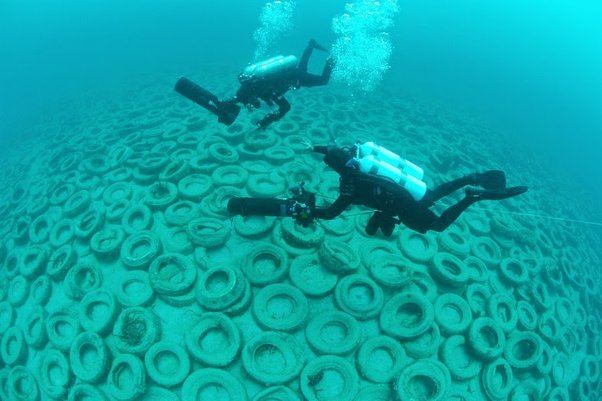
Ever since the event, several organizations have attempted to retrieve the tires but the operation is costly. In 2007, the military took action and removed 73,000 from the ocean.
Despite the efforts, it is still believed that hundreds of thousands still rest on the ocean floor.
So far, no one has successfully retrieved all the tires from the site.
The government of Florida may have had an ambitious intention of overturning a problem by using another one as a solution.
But unfortunately, it didn’t solve it but rather merged it into a bigger one and causing it to be more problematic.
Once upon a time the Aral Sea was the fourth largest lake in the world and home to thriving fishing communities.
Today the Aral Sea is a toxic desert and the graveyard of the rusty ships of the now extinguished fishing communities.
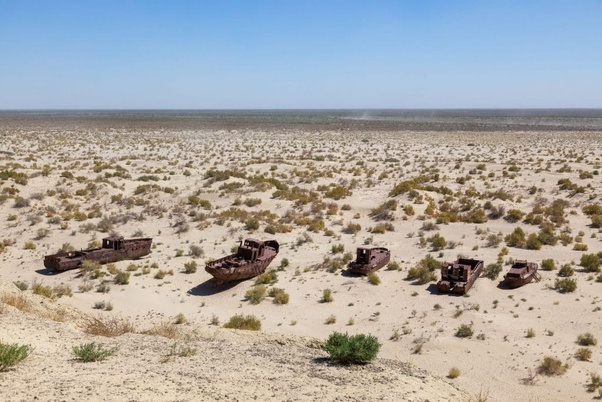
Beginning in around 1960, the Soviet Union decided to divert the rivers connecting to the Aral Sea in order to transform various pastures in Central Asia into fruitful farmlands. By starting this irrigation process, the Soviets had ruined a delicate balance and it soon became clear that the Aral Sea was unable to cope with the water demands of the project. The result of this was that the Aral Sea began to shrink — fast.
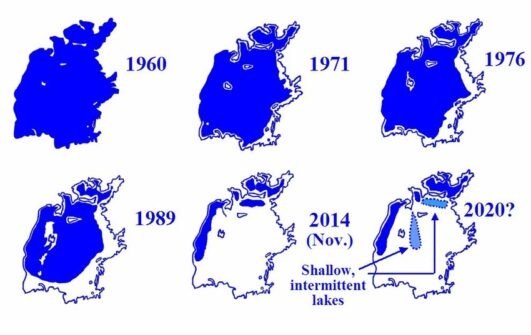
The consequences of the gradual drying up of the Aral Sea were disastrous.
i. The salinity of the lake skyrocketed, resulting in the demise of a huge number of fish.
ii. The vast majority of the fishing communities eventually disappeared, leaving many people destitute and vulnerable.
iii. Pesticides and other toxic agricultural chemicals found their way into the lake, poisoning it. Even in areas where the lake no longer exists these chemicals stubbornly remain in the dust, thereby continuing to pose a health hazard to the surrounding communities as the dust blows into their dwellings. In fact, according to various studies communities near the Aral Sea suffer a far higher rate of infant mortality, infant deformities, throat cancer, anemia and kidney diseases than Europeans.
iv. The salty dust also blew into many agricultural fields, degrading them and prompting their owners to use even more water to keep going. Basically, an irrigation project that dried up the fourth largest lake in the world in order to support surrounding farmlands is now hurting those exact farmlands.
An unmitigated calamity — there is no other way to put it.
Unfortunately, this man-made ecological disaster is not the first and has evidently not been the last. Future disasters are guaranteed due to the Industrial System continuing rapidly and in an extremely destructive manner devouring a growing quantity of the Earth’s resources. It’s simply a matter of time before the next ecocatastrophe occurs.
In 1966, dictator Nicolae Ceausescu decided that Romania needed more people and the way to achieve that goal was to make abortions and contraception for women under age forty-five illegal. He demanded that his people have at least 5 babies. Abortions were abruptly banned, followed by the tripling of birth rate.
The birth rate slowly came back down nearly to its previous level, achieved primarily through dangerous, illegal abortions, which sent the maternal mortality rate skyrocketing.
Women who sought abortions and those who helped them faced years of imprisonment if caught. Women were subjected to mandatory gynecological examinations at work, and those found to be pregnant were monitored for the term by the dreaded secret police, to make sure they kept the child. Hundreds of thousands of unwanted children that were born into poor families that couldn’t afford them were abandoned to orphanages. The prohibition created a tragic horror of overcrowded, filthy orphanages and many painful deaths from back-alley abortions.
The policy gave Romania the highest maternal mortality rates in Europe, the highest number of deaths from abortion and a generation of physically and emotionally malnourished orphans raised in wretched conditions.
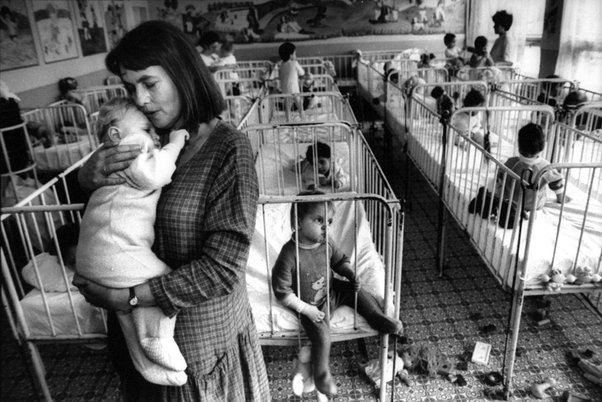
The resentment built up and its explosive power was unleashed when Romanians overthrew and executed Nicolae Ceausescu along with his wife in 1989. The first law that the new government repealed was the ban on abortion and contraception. Despite the legalization of abortion, a sad legacy left behind was Romanian women’s distrust of contraceptives as a result of decades of propaganda. For years after the regime’s downfall, abortion remained the most popular, and dangerous, method of birth control. To this day, Romania still has the highest rate of infant mortality and nearly the lowest life expectancy in the EU.
P/S: I highly recommend reading the comments, thank you for sharing your experiences and memories.
Many people including myself are curious about what happened to these children. I’ve pasted a comment by a Romanian Quoran here, it’s a heart-breaking tragedy:
What also happened – the communist party maintained the orphanages so there wouldn’t be homeless street children out in the open, it would have looked bad.
After the revolution, many establishments were closed and/or children simply ran away and nobody collected them off the streets.
With a severe enough winters that year round outdoors survival is impossible, many children “lived” in heating tunnels and other subterranean refuges like the subway. The underground provided heat, a home, a social circle and a place to hide from the police, which generally would not go in there.
There they usually became victims of substance abuse, cheap terracotta laquer was used to provide a high on the fumes. Later, many transitioned to heroin and its downward spiral.
They had no skills and mostly begged, sometimes stole and usually were co-opted by organized crime as beggars for profit. Yes, there were strong interlopers profitting off their misery.
Ultimately these children became adults, some formed families and had kids of their own, all part of a subterranean culture caused by a huge political mistake.
There were many organizations that tried to rescue the children off the street, offer education and coaching for integration in the society but, justifiably, they were often faced with distrust and had limited success since that was the only life those poor people knew.
That’s where my story ends, I don’t know what became of them but I must assume many died either due to criminality or unavoidable health issues / substance abuse.
This is indeed the most tragic legacy the communists left for the future generation. Anyone who is against birth control hope they can learn the lesson.






